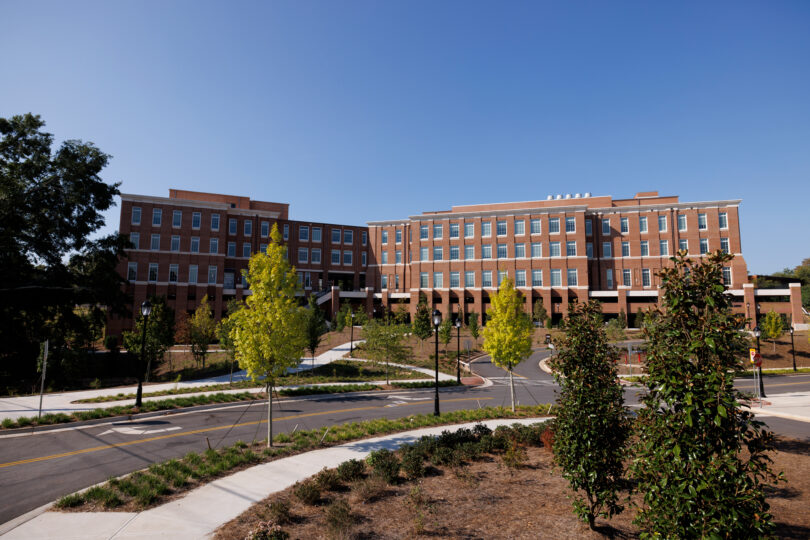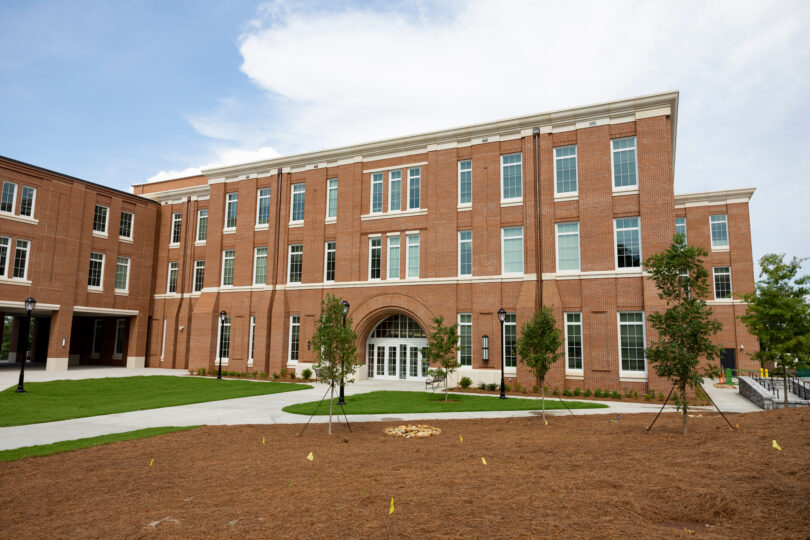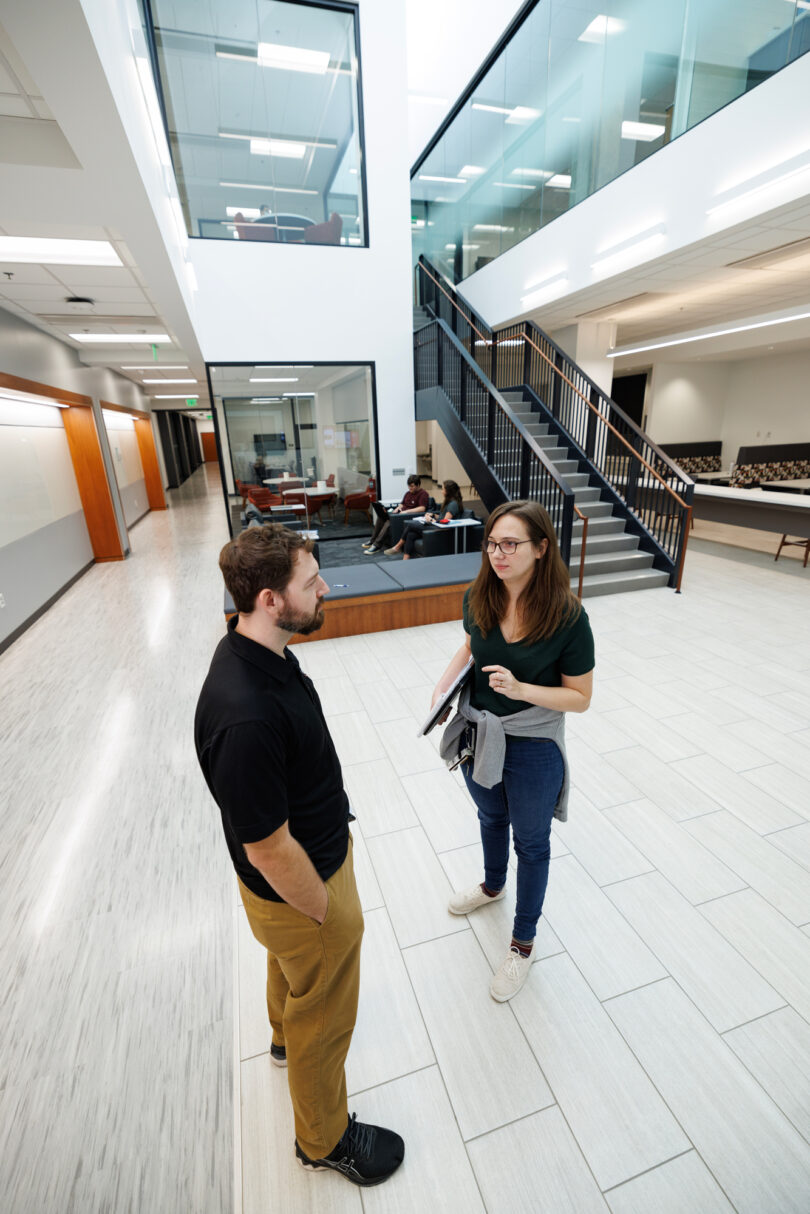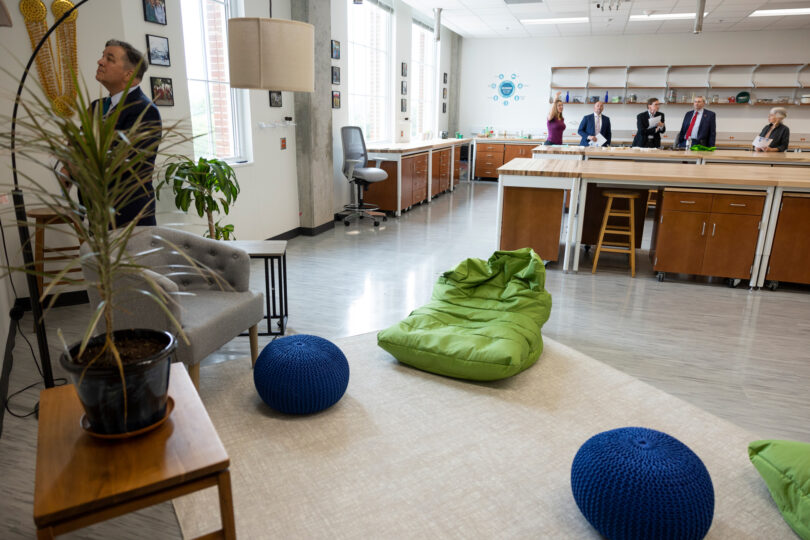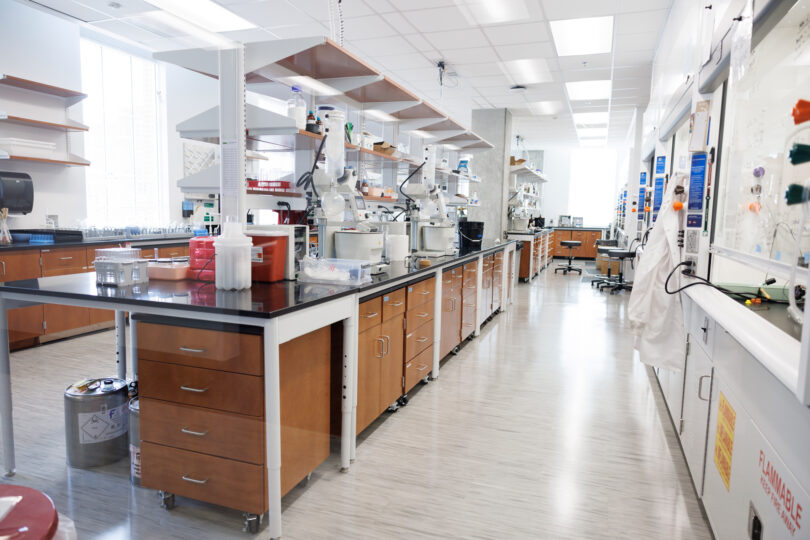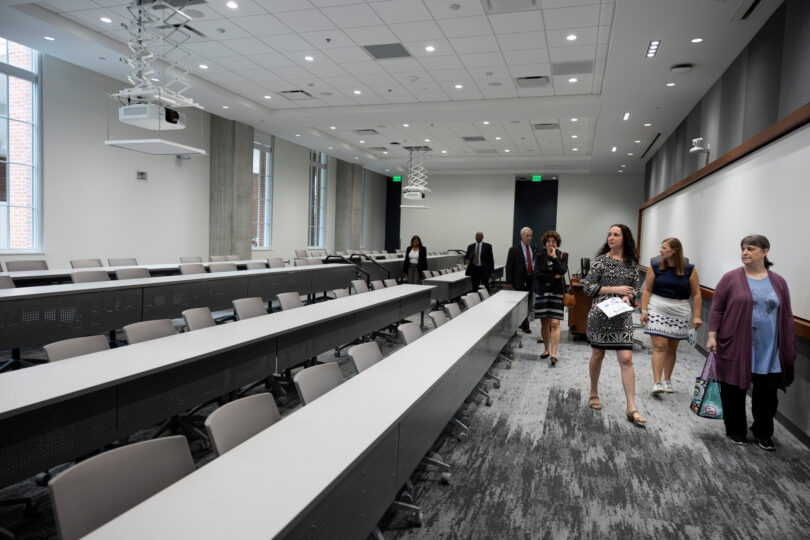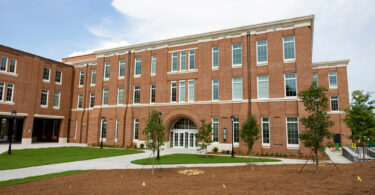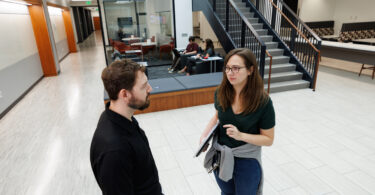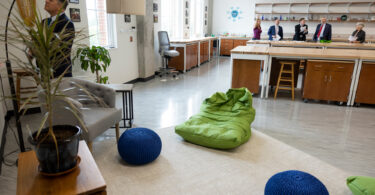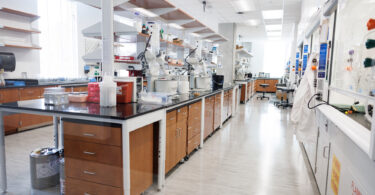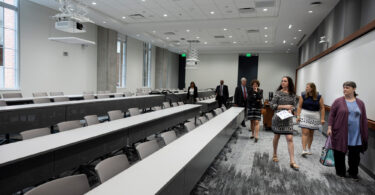Inside the University of Georgia’s new Interdisciplinary Science, Technology, Engineering, and Math (I-STEM) Research Buildings, the vibes are all modern, sleek, and sophisticated, with an emphasis on open workspaces and common gathering areas to promote cross-disciplinary projects.
The research complex adds a whopping 201,000 square feet for research and instruction in chemistry, engineering, and other scientific fields of study.
But I-STEM is just the start of a larger plan to modernize existing facilities on South Campus, including the original Chemistry Building and the Biological Sciences Building, to support the institution’s growing research enterprise.
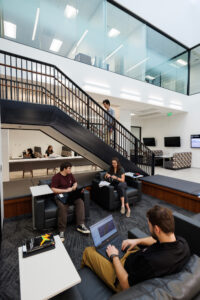 That research enterprise has grown exponentially over the past decade, surpassing the half-billion dollar mark in research and development for the first time in fiscal year 2022. With new facilities like the I-STEM complex and soon-to-be-renovated spaces across Science and Ag Hill and all over campus, that number is only expected to grow.
That research enterprise has grown exponentially over the past decade, surpassing the half-billion dollar mark in research and development for the first time in fiscal year 2022. With new facilities like the I-STEM complex and soon-to-be-renovated spaces across Science and Ag Hill and all over campus, that number is only expected to grow.
“The story of the STEM buildings is really a story of our long-term work planning and strategizing around how to modernize and bring these mid-century science facilities we have on South Campus into the 21st century in a real systematic and strategic way,” says Lara Mathes, director of campus planning.
The I-STEM complex kicks off that larger renovation project by relocating faculty and staff to the new buildings. With some of those older buildings cleared out, the experts in UGA’s architects office will soon start putting their plans for the older buildings’ major renovations in motion.
If those renovations are anything like the I-STEM buildings, UGA students, faculty, and staff are in for a treat.
“I feel like the general mood of the chemistry faculty has been elevated,” says Gary Douberly, associate dean for the Franklin College of Arts and Sciences and professor of chemistry, who recently moved into I-STEM 2. “We’re in a new, literally brighter space. Everybody is just happy to be here, and it creates a really excellent work environment for our students.”
A Lab and Workspace Worth the Wait
When Brandon Rotavera interviewed for a faculty position in 2015, engineering Dean Don Leo made a compelling case: We’re getting a new building for many of our chemistry and engineering faculty, and it’s going to be worth the wait.
Rotavera was in.
He signed on with joint appointments in the College of Engineering and the Franklin College of Arts and Sciences, something reflective of the interdisciplinary nature of the I-STEM complex.
This was before the Driftmier Engineering Center’s multipart renovation, of course. That project modernized the building that was originally built in 1966, renovating more than 84,000 square feet of new classrooms, instructional labs, and collaborative common spaces to the facility in 2020.
Completed in 1960, the Chemistry Building is unmistakable with its midcentury modern aesthetic, lack of windows on multiple sides of the brick exterior that house lecture classrooms, and elevated entrance access via stairs or concrete ramp. (Those features won’t be changing with the Chemistry Building’s upcoming renovation, keeping the character of the building. But the windowless corridors and labs with antiquated electrical, plumbing, and mechanical equipment will.)
But Rotavera and his lab wound up on a very different part of campus than either of those buildings.
He and his lab called the Riverbend Research Lab North building home for the years prior to their big move to I-STEM 1 in November 2021. Riverbend wasn’t a particularly convenient spot for his crew with its location off College Station Road, far removed from both the College of Engineering’s home base and the Chemistry Building.
Rotavera’s research centers on the chemistry of biofuels, a reliable source of energy that can be produced from renewable resources and carbon-capture technologies. His lab’s work informs the design of next-generation combustion engines that support sustainable fuels, with the ultimate goal of lowering the carbon footprint of the transportation sector.
The Rotavera lab works closely with several other groups that now call I-STEM home, like professors Eric Ferreira and  Geoffrey Smith from the Department of Chemistry, and Rawad Saleh in the College of Engineering.
Geoffrey Smith from the Department of Chemistry, and Rawad Saleh in the College of Engineering.
“Our group conducts basic science research, but there’s a real, practical outcome to what we do,” Rotavera says. “At the end of the day, the scientific output from our work directly translates to advancing technologies that have tangible societal impact.”
To do that, his group requires ample lab space for a specialized diagnostics and high-pressure chemical reactor that replicates the temperatures and pressures of an actual engine. And they also need space to conduct computational modeling of combustion.
Moving into a New Space
The wait to get into I-STEM 1 was infinitely worthwhile.
Everything Rotavera and his students need is now housed under one roof, with easy access to colleagues for collaborative projects funded by the National Science Foundation and the U.S. Department of Energy.
“Potential graduate students who apply here and visit campus have to find real value in what we’re doing. From a student’s perspective, if you’re committing yourself to work on a Ph.D. for five years, you want to ensure that you are able to excel and work on meaningful, cutting-edge research in order to position yourself for the career you want,” Rotavera says.
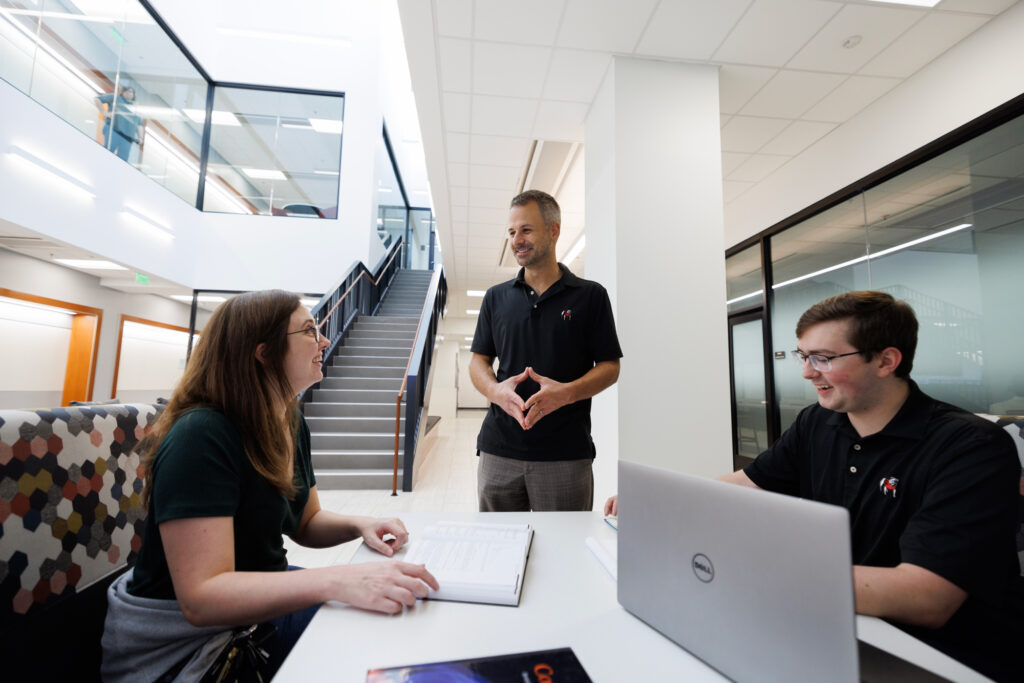
Graduate student Anna Doner talks with Brandon Rotavera, associate professor of chemistry, along with fellow graduate student Samuel Hartness in the common spaces inside the I-STEM Research Building 1. (Photo by Andrew Davis Tucker/UGA)
Sam Hartness BSBCHE ’20, MS ’22 first started working in Rotavera’s lab as an undergraduate researcher as part of the Center for Undergraduate Research Opportunities, or CURO, in 2018. Hartness liked what he was doing enough to stick around to get his master’s degree as well. And now he’s working toward his Ph.D. in engineering.
“Being at UGA, we attract and develop exceptional students at both the undergraduate and graduate levels, and it really enhances the rewarding experience of being an academic,” Rotavera says of students like Hartness. “Now the university’s commitment to our research is visually reflected in having this world-class space within which we can conduct high-quality research.”
The university’s investment in the STEM fields was clear to doctoral student Annabelle Webb when she interviewed with Rotavera.
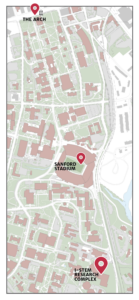 “When applying to graduate school, people told me, ‘Go where there’s funding,’” says Webb, who is working on her doctorate in chemistry. “That’s one thing that is very clear here. The research is valued monetarily, and that definitely will attract people to join the chemistry and engineering programs, for sure.”
“When applying to graduate school, people told me, ‘Go where there’s funding,’” says Webb, who is working on her doctorate in chemistry. “That’s one thing that is very clear here. The research is valued monetarily, and that definitely will attract people to join the chemistry and engineering programs, for sure.”
It attracted Josh DeJongh, a fifth-year student in the Double Dawgs program for engineering and a master’s student in the Rotavera lab. A NASA Pathways Engineering Intern and a veteran of the U.S. Air Force, DeJongh started working with Rotavera in summer 2021 and has received multiple awards from the College of Engineering and UGA’s Student Veterans Resource Center for his work in STEM.
“What I do is a little bit different than what some of the others do in the lab,” he says. “I have no background in chemistry. My work focuses on developing a computational fluid dynamics, or CFD, model of the reactor that the lab uses for all the combustion reactions. And with that, we can make predictions about what’s going on in the reactor and infer detailed information at the interface of fluid mechanics and physical chemistry.”
Bringing together chemistry and engineering students and faculty—in addition to others in scientific fields—is at the heart of the I-STEM Complex.
“It’s a significant recruiting advantage,” Rotavera says. “The visuals of I-STEM are obviously compelling. But there is also a clear sense that a lot of impactful work is being produced here, and I think students ultimately want to be part of a highly productive environment. To that end, the investments that the UGA leadership continues to make in STEM research and education is paying dividends.”
I-STEM Research Building 1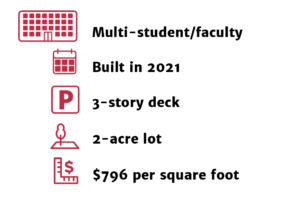
The location of the Interdisciplinary STEM Research Building 1 simply cannot be beat! The three-story all brick building is nestled in the heart of the South Campus science and engineering corridor at the corner of Cedar Street and East Campus Road.
I-STEM 1’s prime location promotes collaboration among the researchers and their colleagues in life sciences, agriculture, computer science, and biomedicine, who frequent the building to use its instrumentation facilities. Those facilities include spaces for nuclear magnetic resonance spectroscopy, mass spectrometry, electron microscopy, and more.
Boyd Graduate Research Center, the Shirley Mathis McBay Science Library, and all the departments housed on Science and Ag Hill are just steps away from I-STEM 1’s beautifully arched doorway. And there’s a three-story parking deck to boot!
More than 30 College of Engineering and Franklin College chemistry faculty members and over 100 graduate students working in areas ranging from cell imaging and microfluidic separation to combustion chemistry and medical robotics are lucky to call this bright and open building with flexible, open lab space their new home!
I-STEM Research Building 2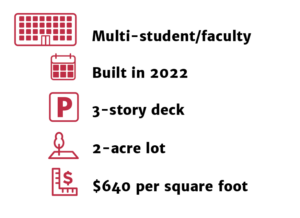
Though the I-STEM buildings are connected, don’t call I-STEM Research Building 2 a repeat of its sister!
With a similar feel to its shiny neighbor I-STEM 1, but with an additional 1,000 square feet of learning and research space, I-STEM 2 is the perfect home base for building collaborations among chemistry, engineering, biomedicine, computer science, and other scientific disciplines.
I-STEM 2 is conveniently located right off East Campus Road, with easy access to the Davison Life Sciences Building, the Odum School of Ecology, and the Warnell School of Forestry, among others. And there’s plenty of parking in the shared three-story deck under the I-STEM complex.
The building boasts three levels of flexible, open lab space as well as an 88-seat classroom! There’s also ample office and support space for faculty and graduate students alike. A central common area with a beautiful grand staircase leading up to the second floor of the three-story building provides the ideal environment for innovative partnerships between disciplines. Whiteboards and TV screens line the walls of the common space, showcasing the latest news and work of the building’s new residents, while booth-like seating gives students and faculty alike a casual place to grab a bite with colleagues.


